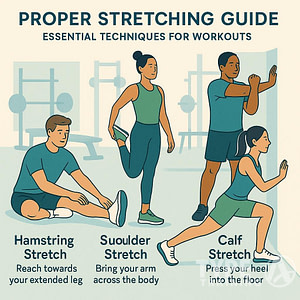Are you struggling to get a good night’s sleep? Do you find yourself tossing and turning, unable to quiet your mind and drift off to dreamland? If so, you’re not alone. Millions of people around the world suffer from sleep problems, ranging from occasional insomnia to chronic sleep disorders. Fortunately, there are many strategies you can use to improve your sleep quality, and one of the most effective is yoga.
Yoga is a centuries-old practice that combines physical postures, breathing exercises, and meditation to promote health and wellbeing. While most people associate yoga with flexibility and stress reduction, it also has powerful effects on the quality and quantity of your sleep. Research has shown that regular yoga practice can improve sleep efficiency, reduce the time it takes to fall asleep, and increase the amount of deep, restorative sleep you get each night.
As yoga teacher and sleep expert Lisa Sanfilippo explains, “Yoga can help you sleep better by calming your nervous system, releasing muscle tension, and quieting your mind. By practicing yoga regularly, you can develop a deeper awareness of your body and breath, which can help you relax more fully and fall asleep more easily.” So if you’re looking for a natural, drug-free way to improve your sleep, yoga may be just what you need.
Key Takeaways
- Yoga can improve the quality and quantity of your sleep by calming your nervous system, releasing muscle tension, and quieting your mind.
- Different styles of yoga are better suited for sleep than others, so it’s important to choose the right one for your needs.
- Some of the most effective yoga poses for better sleep include forward folds, twists, and gentle inversions.
The Benefits of Yoga for Improved Sleep
Popular posts:
Yoga has been shown to have many health benefits, including improving sleep quality. Practicing yoga regularly can help you get a good night’s sleep and wake up feeling refreshed. In fact, over 55% of people who practice yoga report improved sleep, while over 85% report reduced stress.
There are several ways that yoga can help improve sleep quality. First, yoga helps reduce stress and anxiety, which are common causes of sleep problems. By practicing yoga, you can learn to relax and let go of stress, which can help you fall asleep more easily and sleep more deeply.
Second, yoga can help improve breathing and increase oxygen flow to the body. This can help reduce tension and promote relaxation, making it easier to fall asleep and stay asleep throughout the night.
Third, yoga can help increase physical activity levels, which has been shown to enhance the quality of sleep. Yoga poses and movements can help stretch and strengthen the body, leading to a better night’s sleep.
In addition, yoga can help regulate the body’s circadian rhythm, which is the internal clock that regulates sleep and wake cycles. By practicing yoga at the same time every day, you can help train your body to get into a regular sleep routine, making it easier to fall asleep and wake up at the same time each day.
According to Dr. Marlynn Wei, a contributing editor at Harvard Health, “Yoga is a gentle and restorative way to wind down your day. A national survey found that over 55% of people who did yoga found that it helped them get better sleep. Over 85% said yoga helped reduce stress.”
So practicing yoga regularly can help improve sleep quality by reducing stress and anxiety, improving breathing, increasing physical activity levels, and regulating the body’s circadian rhythm. By incorporating yoga into your daily routine, you can enjoy a better night’s sleep and wake up feeling refreshed and rejuvenated.
Understanding Different Yoga Styles for Sleep
When it comes to practicing yoga for better sleep, not all yoga styles are created equal. Some styles of yoga are better suited for helping you relax and prepare for sleep than others. Here are some of the most popular yoga styles for sleep:
Restorative Yoga
Restorative yoga is a gentle and relaxing style of yoga that focuses on holding restful poses for extended periods of time. This style of yoga helps you release tension and stress in your body, making it the perfect choice for preparing for sleep. Restorative yoga poses can be done using props like blankets, blocks, and bolsters to help support your body in a comfortable position.
Yin Yoga
Yin yoga is another slow-paced style of yoga that involves holding poses for long periods of time. This style of yoga targets the connective tissues in your body, helping to improve flexibility and release tension. Yin yoga is a great choice for improving relaxation and preparing your body for sleep.
Hatha Yoga
Hatha yoga is a classic style of yoga that focuses on basic body positions and stretching at a slower pace. This style of yoga is great for beginners and those looking for a gentle yoga practice. Hatha yoga can be a great choice for preparing your body for sleep, especially if you’re new to yoga.
Nidra Yoga
Nidra yoga, also known as yoga nidra, is a deep guided relaxation methodology that’s practiced while lying down. This style of yoga involves a guided meditation that helps you enter a state of deep relaxation, making it an excellent choice for preparing for sleep.
Vinyasa Yoga
Vinyasa yoga is a more fast-paced style of yoga that involves flowing from one pose to the next in a sequence. While this style of yoga can be invigorating, it may not be the best choice for preparing for sleep. However, if you enjoy vinyasa yoga, you can try incorporating some restorative or yin yoga poses at the end of your practice to help you relax and wind down.
Hot Yoga
Hot yoga is a style of yoga that’s practiced in a heated room. While this style of yoga can be invigorating and help you work up a sweat, it may not be the best choice for preparing for sleep. The heat can be stimulating and make it difficult to relax and wind down.
According to Dr. Anis Rehman, an internal medicine physician, “Yoga is a form of meditative movement that combines attentiveness and focused breathing with physical exercise.” By choosing a yoga style that focuses on relaxation and gentle movement, you can help prepare your body and mind for a good night’s sleep.
Key Yoga Poses for Better Sleep
source: myluxurylinen.com
If you’re having trouble sleeping, practicing yoga can be a great way to relax your mind and body before bed. Here are some key yoga poses that can help you get better sleep:
Corpse Pose (Savasana)
Corpse pose, also known as savasana, is a great way to relax your entire body and mind. Lie down on your back with your arms and legs stretched out, palms facing up. Close your eyes and focus on your breath. Stay in this pose for at least 5-10 minutes.
Supta Baddha Konasana (Reclining Bound Angle Pose)
Supta baddha konasana, also known as reclining bound angle pose, is a great way to open up your hips and relax your body. Lie down on your back with the soles of your feet touching each other and your knees falling out to the sides. Place your hands on your belly or by your sides. Stay in this pose for at least 5-10 minutes.
Standing Forward Bend (Uttanasana)
Standing forward bend, also known as uttanasana, is a great way to release tension in your back and hamstrings. Stand with your feet hip-width apart and fold forward, reaching for your toes. Let your head hang heavy and relax your neck. Stay in this pose for at least 5-10 breaths.
Legs Up the Wall (Viparita Karani)
Legs up the wall, also known as viparita karani, is a great way to improve circulation and calm your mind. Lie down on your back with your legs up against a wall. Relax your arms by your sides and focus on your breath. Stay in this pose for at least 5-10 minutes.
Butterfly Pose (Baddha Konasana)
Butterfly pose, also known as baddha konasana, is a great way to stretch your inner thighs and hips. Sit on the floor with the soles of your feet touching each other and your knees falling out to the sides. Use your hands to gently press your knees down towards the floor. Stay in this pose for at least 5-10 breaths.
Child’s Pose (Balasana)
Child’s pose, also known as balasana, is a great way to release tension in your back and shoulders. Kneel down on the floor and fold forward, resting your forehead on the ground. Let your arms relax by your sides or stretch them out in front of you. Stay in this pose for at least 5-10 breaths.
Reclined Butterfly (Supta Baddha Konasana)
Reclined butterfly, also known as supta baddha konasana, is a great way to relax your body and mind. Lie down on your back with the soles of your feet touching each other and your knees falling out to the sides. Place a pillow or blanket under your knees for support. Stay in this pose for at least 5-10 minutes.
According to Johns Hopkins Medicine, “Better styles for pre-sleep are hatha yoga (which focuses on body position) and nidra (which focuses on breathing and more restorative poses, such as lying and sitting postures).” Incorporating these key yoga poses into your pre-sleep routine can help you relax and get better sleep.
The Role of Breathing and Mindfulness in Sleep Yoga
When it comes to Better Sleep Yoga, breathing and mindfulness play a crucial role in helping you relax and unwind before bed. The practice of deep breathing can help calm your mind and body, making it easier for you to fall asleep and stay asleep throughout the night. Mindfulness, on the other hand, involves being present in the moment and focusing your attention on your breath and body.
During a Sleep Yoga session, you will be guided through a series of meditative movements that are designed to help you relax and let go of stress and tension. As you move through the poses, you will be encouraged to focus on your breath and let go of any distracting thoughts or worries. This can help quiet your mind and create a sense of inner peace and calm.
One of the most important aspects of Sleep Yoga is learning to control your breath. By taking slow, deep breaths, you can activate your parasympathetic nervous system, which helps to reduce stress and promote relaxation. This can help you fall asleep faster and stay asleep longer.
As you practice Sleep Yoga, you will also learn to cultivate a sense of mindfulness. This involves being present in the moment and focusing your attention on your breath and body. By practicing mindfulness, you can learn to let go of distracting thoughts and worries and create a sense of inner peace and calm.
According to Johns Hopkins Medicine, “Breathing is one of the most important therapeutic aspects of yoga. Your goal during each session is to focus your attention on your breath, let all of your thoughts drift away and be present in the moment.” – hopkinsmedicine.org
In summary, breathing and mindfulness are essential components of Sleep Yoga. By learning to control your breath and cultivate a sense of mindfulness, you can create a sense of inner peace and calm that can help you fall asleep faster and stay asleep longer.
Yoga’s Impact on Sleep-Related Health Issues

If you struggle with sleep-related health issues such as insomnia, anxiety, mental health disorders, restless leg syndrome, or sleep disturbances, yoga may be a helpful addition to your routine. Here are some ways yoga can positively impact these issues:
- Insomnia: Yoga can help you relax and reduce stress, making it easier to fall asleep and stay asleep. A study published in the Journal of Ayurveda and Integrative Medicine found that practicing yoga for eight weeks significantly improved sleep quality in participants with insomnia.
- Anxiety: Yoga can be an effective tool to manage anxiety. By focusing on your breath and body, yoga can help you feel more calm and centered. A study published in the Journal of Clinical Psychology found that yoga reduced anxiety symptoms in participants with generalized anxiety disorder.
- Mental Health: Yoga has been shown to have positive effects on mental health. A review of studies published in the Journal of Psychiatric Practice found that yoga can improve symptoms of depression, anxiety, and post-traumatic stress disorder.
- Restless Leg Syndrome: Yoga can help alleviate symptoms of restless leg syndrome. A study published in the Journal of Alternative and Complementary Medicine found that practicing yoga for eight weeks reduced symptoms of restless leg syndrome in participants.
- Sleep Disturbances: Yoga can help improve overall sleep quality, making it easier to fall asleep and stay asleep. A study published in the Journal of Sleep Disorders: Treatment and Care found that practicing yoga improved sleep quality in participants with sleep disturbances.
As Dr. Marlynn Wei, MD, JD, Contributing Editor at Harvard Health Blog, states, “Yoga is a gentle and restorative way to wind down your day.” Incorporating yoga into your routine can have positive effects on your sleep-related health issues.
Influence of Yoga on Sleep Hormones
Yoga can have a positive impact on sleep hormones, including melatonin, which is a hormone that regulates sleep and wakefulness. Melatonin levels naturally increase in the evening and decrease in the morning, helping to promote sleep at night and wakefulness during the day.
Studies have shown that practicing yoga can increase melatonin levels, leading to improved sleep quality. In a study published in the International Journal of Yoga, researchers found that participants who practiced yoga for three months had significantly higher melatonin levels than those who did not practice yoga.
In addition to increasing melatonin levels, yoga can also help regulate cortisol levels, which is a hormone that is released in response to stress. High cortisol levels can interfere with sleep, making it difficult to fall asleep or stay asleep throughout the night.
According to Dr. Julie K. Staples, a licensed acupuncturist and yoga instructor, “Yoga can help regulate cortisol levels and promote relaxation, which can lead to better sleep.”
Overall, the influence of yoga on sleep hormones can lead to improved sleep quality and better overall health. By practicing yoga regularly, you may be able to regulate your sleep hormones and enjoy a more restful and rejuvenating night’s sleep.
Yoga as a Bedtime Routine
source: stlukeshealth.org
If you struggle with falling asleep or staying asleep throughout the night, incorporating yoga into your bedtime routine may help. Bedtime yoga can help you relax, release tension, and quiet your mind, making it easier to drift off into a restful slumber.
Gravity plays a significant role in the quality of your sleep. When you practice yoga, you can use gravity to your advantage by incorporating poses that help you relax and release tension. Poses such as Child’s Pose, Forward Fold, and Legs Up the Wall can help you relax and calm your nervous system, making it easier to fall asleep.
Stretching before bed can also help you sleep better. When you stretch, you release tension in your muscles and increase blood flow to your body, which can help you relax and prepare for sleep. Incorporating yoga stretches, such as the Cat-Cow pose, Downward Facing Dog, and Cobra pose, can help you release tension and prepare your body for a restful night’s sleep.
According to Johns Hopkins Medicine, “Yoga can help you fall asleep faster, sleep longer, and sleep more soundly.” Practicing yoga before bed can also help reduce stress and anxiety, which are common factors that can interfere with sleep.
As yoga teacher Timothy Burgin says, “Yoga before bed can help calm the mind, slow down the breath, and relax the body, all of which are essential for a good night’s sleep.”
Incorporating a few simple yoga poses into your bedtime routine can help you relax, release tension, and prepare your body for a restful night’s sleep. Give it a try and see if it helps you get the sleep you need.
Yoga and Sleep Quality in Aging and Disease
As you age, your sleep quality can decrease, leading to insomnia, difficulty falling asleep, and waking up frequently during the night. Research has shown that practicing yoga regularly can improve sleep quality and duration in older adults, as well as breast cancer patients.
A study published in the National Center for Biotechnology Information found that older adults who practiced yoga regularly had better overall sleep quality, took less time to fall asleep, and experienced fewer episodes of disturbed sleep. Additionally, they reported feeling more rested and energetic in the morning.
Yoga can also benefit breast cancer patients who may experience sleep disturbances due to their condition and treatment. A study published in the Journal of Clinical Oncology found that breast cancer patients who practiced yoga experienced improved sleep quality and reduced fatigue.
In addition to improving sleep quality, yoga can also have a positive impact on the duration of sleep. A study published by Johns Hopkins Medicine found that participants who practiced yoga reported significant improvements in sleep duration and sleep efficiency, measured by the percentage of time in bed that they were actually asleep.
Overall, incorporating yoga into your routine can have a positive impact on your sleep quality and duration, particularly as you age or if you are dealing with a disease that affects your sleep. As Dr. Lisa M. Rafel, a yoga instructor and researcher, notes, “Yoga can help you sleep better by calming the mind and relaxing the body, which can help reduce stress and anxiety that often contribute to sleep problems.”
Frequently Asked Questions
What are some yoga poses that can help improve sleep?
Some yoga poses that can help improve sleep include the Child’s Pose, Legs Up the Wall Pose, and the Corpse Pose. These poses can help to relax the body and mind, reduce stress, and promote a sense of calmness and relaxation.
Is there a specific type of yoga that is best for improving sleep?
While any type of yoga can be beneficial for improving sleep, some styles may be better suited for this purpose than others. Hatha yoga, Restorative yoga, and Yoga Nidra are all styles of yoga that can be particularly helpful for improving sleep.
Can practicing yoga before bed help with insomnia and depression?
Yes, practicing yoga before bed can be helpful for managing insomnia and depression. Yoga has been shown to reduce stress and anxiety, which can contribute to both insomnia and depression. Additionally, yoga can help to promote relaxation and improve overall sleep quality.
What is Yoga Nidra and how does it promote better sleep?
Yoga Nidra is a deep guided relaxation methodology that is also known as yogic sleep. It is practiced while lying down and involves a series of guided meditations and visualizations that can help promote relaxation and reduce stress. Yoga Nidra has been shown to be particularly helpful for improving sleep quality.
“Yoga Nidra has been shown to reduce anxiety and promote better sleep.” – Johns Hopkins Medicine
Are there any specific yoga poses that can be done in bed to promote better sleep?
Yes, there are several yoga poses that can be done in bed to promote better sleep. Some examples include the Reclining Bound Angle Pose, the Supine Spinal Twist, and the Happy Baby Pose. These poses can help to relax the body and mind, reduce stress, and promote a sense of calmness and relaxation.
How can yoga help improve the quality of deep sleep?
Yoga can help to improve the quality of deep sleep by reducing stress and anxiety, promoting relaxation, and improving overall sleep quality. Additionally, yoga can help to regulate the breath and promote a sense of calmness and relaxation, which can help to promote deeper and more restful sleep.












